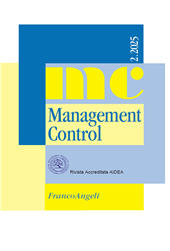What Makes Business Intelligence e Analytics Systems Stick? Identifying Recurrent Enablers in Management Accounting Practices
133-156 p.
Despite the growing interest in Business Intelligence e Analytics (BIeA) systems, many organizations still struggle to fully embed these tools into their Management Accounting (MA) practices after initial adoption. Yet, limited attention has been devoted to the stage of actual use, and prior studies have mostly examined individual enablers of use in isolation. This paper addresses this gap by investigating which bundle of enabling factors most frequently recur across organizations that have integrated BIeA systems into their MA practices. Drawing on the Unified Theory of Acceptance and Use of Technology (UTAUT) as a conceptual lens, the study is based on a cross-sectional field study involving eight Italian medium-sized and large companies. The findings reveal that BIeA system usage in MA contexts emerges not from isolated drivers, but from combinations of factors spanning organizational, technical, and behavioural dimensions. In particular, six enabling factors emerged as
consistently present: (1) perceived usefulness of the BIeA system by end users, (2) strong understanding of company processes by management accountants, (3) collaborative implementation involving end users, (4) active management support, (5) cross-functional implementation teams, (6) demand-driven development of BIeA outputs. In addition, the study identifies the choice of the entry point, specifically the decision to start implementation with sales data, as a novel and underexplored enabler. Sales data, being highly accessible, easy to validate, and directly relevant to decision-making, played a crucial role in building early user trust and reducing perceived complexity. This trusted entry point contributed to lower resistance and foster confidence, allowing users to perceive the BIeA system as immediately useful and manageable. [Publisher's text]
Is part of
Management Control : 2, 2025-
Articles from the same issue (available individually)
-
Information
ISSN: 2239-4397
KEYWORDS
- Management Accounting, Business Intelligence e Analytics, Use, Enablers


